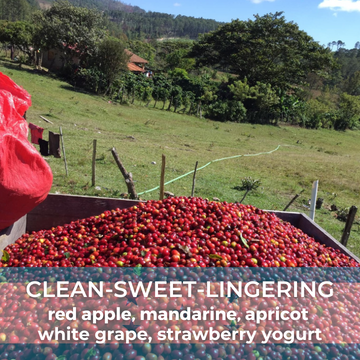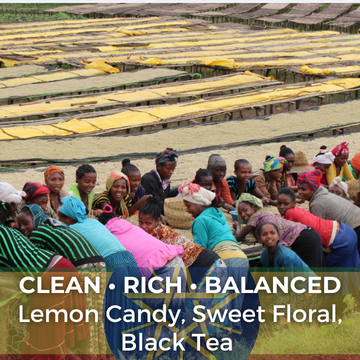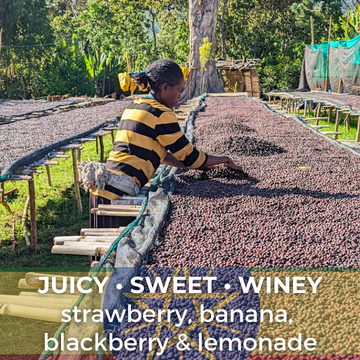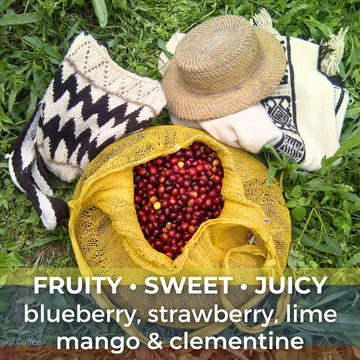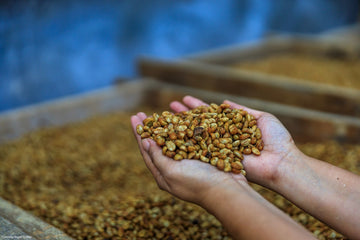Frost in Brazil - Are Coffee Prices Going Up?
Everyone in the Specialty Coffee Industry is talking about the recent frosts in Brazil and what it means for the market. From commodity traders and import brokers all the way to coffee drinkers at home, we've all got the same question: are coffee prices going to increase?
Short answer? Yes. Long answer? Yes, but as a home coffee roaster, you really don't need to panic. Longer answer? Well first, we need to talk about Brazil and why it matters so much what happens there. Strap in and buckle up, we're learning about futures, commodities and the wide world of international finance!

It's an older meme sir, but it checks out.
What is the "C Market?"
I'll be honest, I'm not a financial expert, I'm a coffee expert (that's being generous). I mean, people get Master's degrees in finance, it's seriously complicated stuff. That being said, I do know a little bit about the C Market purely because it effects nearly all aspects of coffee buying and selling. So let's keep this as simple as possible! According to Sustainable Harvest, a coffee importer based out of Portland, OR, "

The total losses are unknowable at this point, but the damage is thought to be greater than initially expected. One of our supply partners put the losses at an estimated 4.5 million bags after flying over the affected areas. This represents perhaps 8-10% of the annual estimated yield from the country (depending on who is doing the counting)."
“The estimated 4ish million bag loss may seem meager in the scope of Brazil’s usual annual production of approximately 50 million bags, but the foundation for a major move had been laid with worldwide supply chain issues, overall commodity basket volatility, drought, and social unrest in other major producing countries,” notes Alex Mason, a 28-year veteran of the specialty coffee industry and VP of Trading Activity at Royal Coffee.
Is it time to panic yet?
Short Answer? No. Long Answer? Ok, we're not doing this again. Look, I won't lie to you, coffee prices are going to increase. A little. Assuming we've hit the peak of this spike, our prices are looking at increasing an average of about 50 cents per pound, with some coffees going up as little as 20 cents and others going up as much as a dollar. If you roast a pound per week, which is enough for about 2 people, that means your monthly cost will go up by as little as $1 and as much as $4, depending on your coffee preferences. Surprisingly, high end coffees will be impacted less than budget coffees (which is most of what Brazil produces). That's because budget coffee prices are more closely tied to the C Market while high end coffees are priced by actual coffee people who understand their value and not futures traders who think Starbucks coffee is high end. And more importantly, this won't last forever.

Ya'll remember how insanely expensive coffee was in 2011 and 2015 and how everybody went out of business? Yeah, I don't either.
Here's a 10 year graph of the C Market price. See how the price always eventually came down? Sooner or later it will normalize, possibly at a slightly higher level than it was, but this isn't the coffee-pocalypse some alarmists are calling it. Let's see what the CEO of Royal Coffee has to say to coffee business owners like myself:
“With this potentially looking like the first really damaging frost in decades, and only the third time that coffee futures have approached the $2.00 level since the late 1990’s, it is easy to panic,’ says Max Nicholas-Fulmer, CEO of Royal Coffee. “Our advice is to think in shorter time horizons than you may be used to. Many roasters have gotten in the habit of buying for an entire year. Right now, it seems prudent to think in terms of 60 days (about 2 months) at a time. Make sure you have some coffee booked, roast and sell what you need, and check back with us when you have depleted that supply by half. The reality is that a $2.00 market is not that bad."
And he's right! Just like we see in the graph above, the coffee industry has weathered price spikes like this many times before, at least 3 times in the last decade alone. The people who are worried are super wealthy investment managers and CEOs of mega coffee companies like Starbucks. They might miss their quarterly bonus because margins were too thin! Small business owners and home coffee roasters like you and me will weather this storm just fine. Once again, I'm gonna push my disclaimer, I'm not a financial expert and I definitely don't have a crystal ball. All I can do is talk to other people in the industry and look at past occurrences of big price spikes, frosts and other weather events and see how the industry adapted over a long enough period of time. Based on that, I don't think this is going to be all that bad.
Our plan for the next few months is to avoid budget coffees whose prices are more closely tied to the C Market and focus more on higher end offerings since they won't be as impacted by this spike. Because if I'm paying more for coffee anyways, I might as well be drinking the good stuff. But don't worry budget conscious folks, I totally get it! Times are tough right now and we'll still do our best to offer some budget options and we have no plans to increase our margins. Just know the price increases you might see aren't because I'm getting greedy, it's because investment managers are gambling on the Intercontinental Exchange.
The folks I feel the most for are the farmers in Brazil. They are truly the hardest hit by this frost and my heart goes out to them. Some of them will take years to rebuild if they lost whole plants and not just a percentage of this season's harvest. Hang in there farmers!
Wanna learn more about the C Market? Check out the full article we quoted from Sustainable Harvest: https://www.sustainableharvest.com/blog/c-market-101-what-is-the-c-market
Wanna learn more about the frost in Brazil? Here's the full blog from Royal we quoted several times: https://royalcoffee.com/frost-in-brazil-what-does-it-mean/
Here's another great article about the frost in Brazil (although I thought it was just a smidge alarmist): https://perfectdailygrind.com/2021/07/why-is-frost-in-brazil-causing-global-coffee-prices-to-increase/
